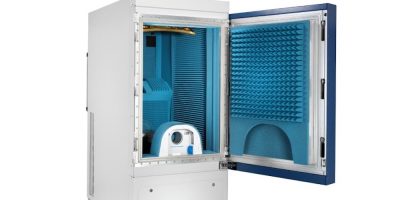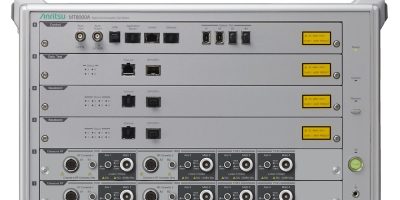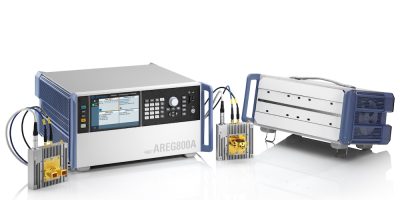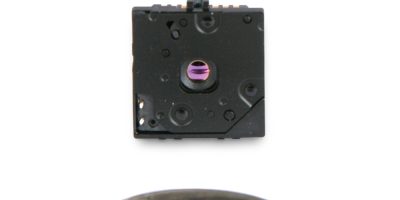Active antenna arrays with beamforming capabilities are a key technology for establishing links between satellite terminals and end devices on the ground. At European Microwave Week (EuMW) 2023 in Berlin, Rohde & Schwarz and IMST will showcase a test chamber for over-the-air (OTA) measurements of electrically large beamforming antenna arrays for satellite communications (satcomms) applications.
The ATS1800C CATR (compact antenna test range) -based test chamber can be used for characterising active antenna arrays for satcomms applications.
New satellite constellations in low Earth orbit (LEO), medium Earth orbit (MEO) or geostationary orbit (GEO) allow uninterrupted connectivity on land at sea and in the air which will enable new services such as global tracking, the IoT, remote sensing or non-terrestrial networks (NTN).
Rohde & Schwarz has partnered with IMST for a demonstration of satcomms terminal testing at EuMW 2023. Testing the performance of satellite terminal systems and components with appropriate signals under realistic OTA conditions is crucial. Satcom infrastructure size, form factor, weight and performance are all challenging for SATCOM terminal manufacturers. The ATS1800C is designed to characterise an IMST Santana IV antenna array module. It has a CATR reflector that creates a large quiet zone for much higher measurement certainty relative to other solutions, said Rohde & Schwarz.
The ZNA vector network analyser can test and characterise devices under test. The R&S AMS32 software measures technical parameters such as magnitude and phase of far field and near field distributions, as well as metrics such as error vector magnitude (EVM) to characterise the digitally-modulated transceiver performance.
The Santana IV module (FKZ 50RK1925) is a smart antenna terminal designed by IMST. It is equipped with electronically controlled antenna beam steering that allows the beam shape and pointing direction to be electronically adjusted without any moving mechanical parts. The TX antenna array has 64 elements that support dual linear or circular polarisation. The array was designed for an operating frequency range from 29.5 to 30GHz, which can be used for applications such satcom on the move. The single 64-element module can be used as a base module for larger arrays.
Visitors can see the active antenna array testing at the Rohde & Schwarz stand H105 of Messe Berlin Hub27 at EuMW 2023 (19 to 21 September).







